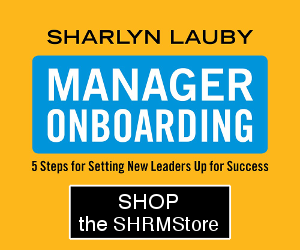A couple weeks ago, I participated in a webinar with my friends at SilkRoad on “HR’s Role in Bridging the Skills Gap.” During the webinar, we asked listeners about some of the strategies they were using, such as training, succession planning, and knowledge management. Afterward, I received an email with a question. And, it’s a tough question too.
How do you overcome management saying, “We’re not that kind of company.”?
Now more than ever, HR pros are trying to step up their game: promote the company’s employment brand, improve the candidate experience, develop future leaders, and create a more effective performance management process (just to name a few.) These are very important steps in attracting and retaining great talent. It can be incredibly frustrating to hear about new and innovative ways to manage talent only to have senior management reply, “That’s not really something we want to try. Go find another option.”
Bringing change into the organization is hard. If you’re trying to implement change, getting buy-in is essential. It can be one of the ways to introduce new ideas. Find a member of the senior management team who’s willing to listen. Get them to help sell the change. A couple of years ago, I had the privilege of interviewing Dr. John Kotter from Harvard University for a piece on organizational change. It’s a good read about the process of buy-in.
But I think there’s a bigger issue. We touched on it during a Twitter chat with The Workforce Institute discussing company culture. That is, understanding the definition of culture, who drives it, and what are the key components. If we don’t know what makes up our company culture, how can we change it?
Then the question becomes, if we have a firm grasp on what our organizational culture is, then we should know when our proposals are going to be a major deviation from existing culture. And we should be prepared to set-up the conversation accordingly.
“On this surface, this idea doesn’t align with our culture. But let me tell you why I think we need to consider it AND how I think we could make it work.”
When we propose a new idea, it’s not for grins and giggles. It is because we need to address an issue impacting the business. That’s where we need to start. Acknowledge the problem. Then, be prepared to discuss why the idea or proposal is worth making a company culture change. I can’t guarantee that the answer will be “yes” but it could open the door to a different discussion – one that puts the root cause of the problem on the table for discussion.
It’s also sad to say that sometimes, no matter how many times we propose change, the answer will be “no.” At some point, you have to realize, it’s not you. The organization doesn’t want to change. And ask yourself, if you’re okay with that being the way things go.
Image taken by Sharlyn Lauby at a public demonstration (with permission of course)
1








android says
Thanks for sharing up–to-date on this subject! I find it is very informative and very well written one! Keep up on this quality!
Morgan says
Having organizational culture is key to keeping your business thriving. It’s important to ensure your company is diversified in order to have a wide variety of ideas, perspectives, and personalities. Nicely said! Thanks so much for sharing!
Zafar @ Search Results Media says
I agree with you that bringing change into the Organization’s culture & Policy is very hard, but sometimes it is essentials to make the changes for the betterment of the organization. By the way, the article is awesome. Thanks for sharing.
Scott Biddick says
Some people forget how important it is to have someone guide you in your business. It may not be crucial to some. But if you’re just starting. It is really important.